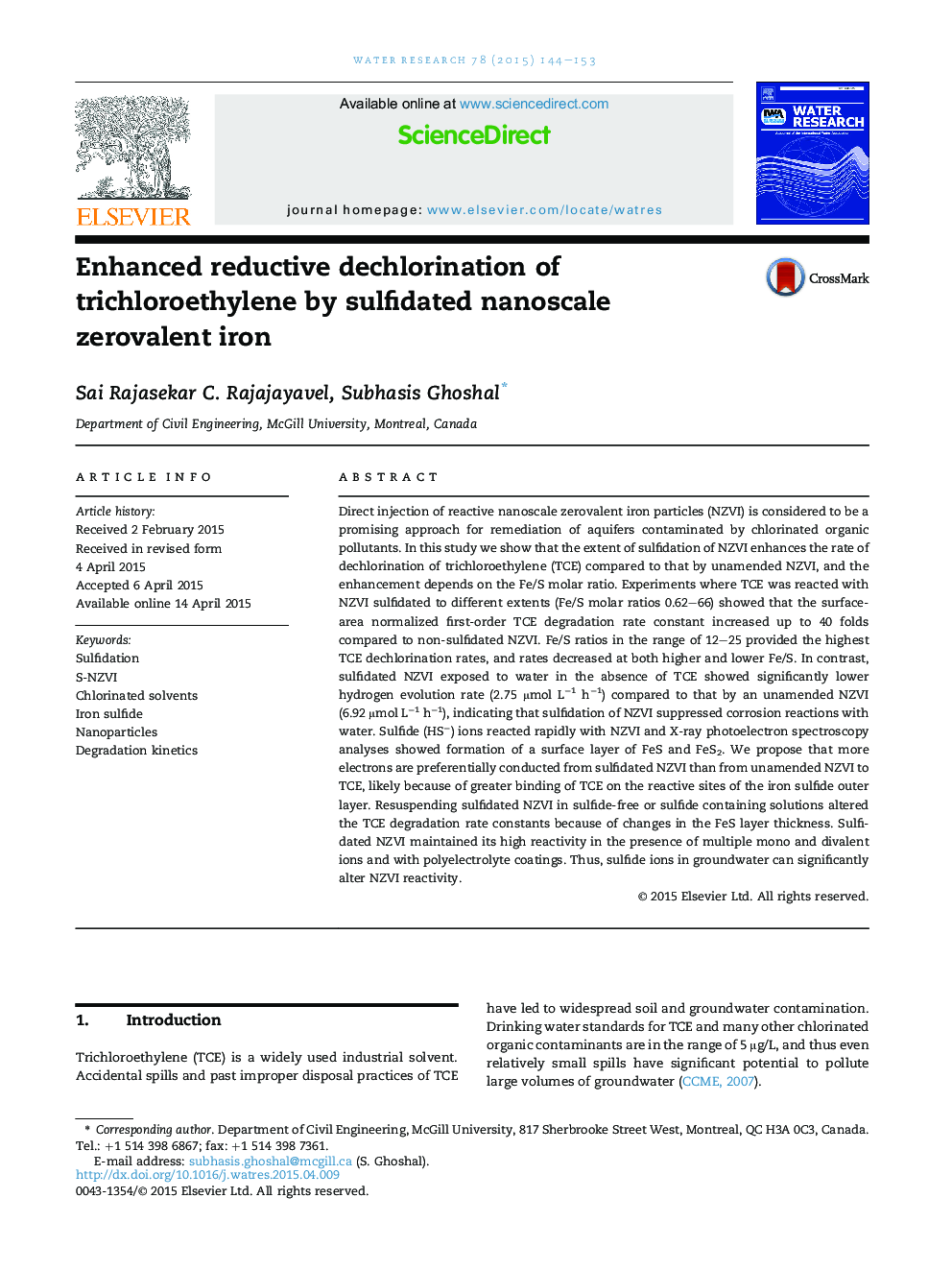| کد مقاله | کد نشریه | سال انتشار | مقاله انگلیسی | نسخه تمام متن |
|---|---|---|---|---|
| 4481122 | 1623090 | 2015 | 10 صفحه PDF | دانلود رایگان |
• HS – reacts rapidly with NZVI forming a surface layer of FeS on the Fe(0) core.
• Sulfidated NZVI enhances TCE degradation rates by up to 40 times compared to NZVI.
• Sulfidated NZVI conducts more electrons to TCE than H2O compared to NZVI.
• Sulfidated NZVI remains reactive after polymer coating and in groundwater.
Direct injection of reactive nanoscale zerovalent iron particles (NZVI) is considered to be a promising approach for remediation of aquifers contaminated by chlorinated organic pollutants. In this study we show that the extent of sulfidation of NZVI enhances the rate of dechlorination of trichloroethylene (TCE) compared to that by unamended NZVI, and the enhancement depends on the Fe/S molar ratio. Experiments where TCE was reacted with NZVI sulfidated to different extents (Fe/S molar ratios 0.62–66) showed that the surface-area normalized first-order TCE degradation rate constant increased up to 40 folds compared to non-sulfidated NZVI. Fe/S ratios in the range of 12–25 provided the highest TCE dechlorination rates, and rates decreased at both higher and lower Fe/S. In contrast, sulfidated NZVI exposed to water in the absence of TCE showed significantly lower hydrogen evolution rate (2.75 μmol L−1 h−1) compared to that by an unamended NZVI (6.92 μmol L−1 h−1), indicating that sulfidation of NZVI suppressed corrosion reactions with water. Sulfide (HS−) ions reacted rapidly with NZVI and X-ray photoelectron spectroscopy analyses showed formation of a surface layer of FeS and FeS2. We propose that more electrons are preferentially conducted from sulfidated NZVI than from unamended NZVI to TCE, likely because of greater binding of TCE on the reactive sites of the iron sulfide outer layer. Resuspending sulfidated NZVI in sulfide-free or sulfide containing solutions altered the TCE degradation rate constants because of changes in the FeS layer thickness. Sulfidated NZVI maintained its high reactivity in the presence of multiple mono and divalent ions and with polyelectrolyte coatings. Thus, sulfide ions in groundwater can significantly alter NZVI reactivity.
Figure optionsDownload high-quality image (135 K)Download as PowerPoint slide
Journal: Water Research - Volume 78, 1 July 2015, Pages 144–153
